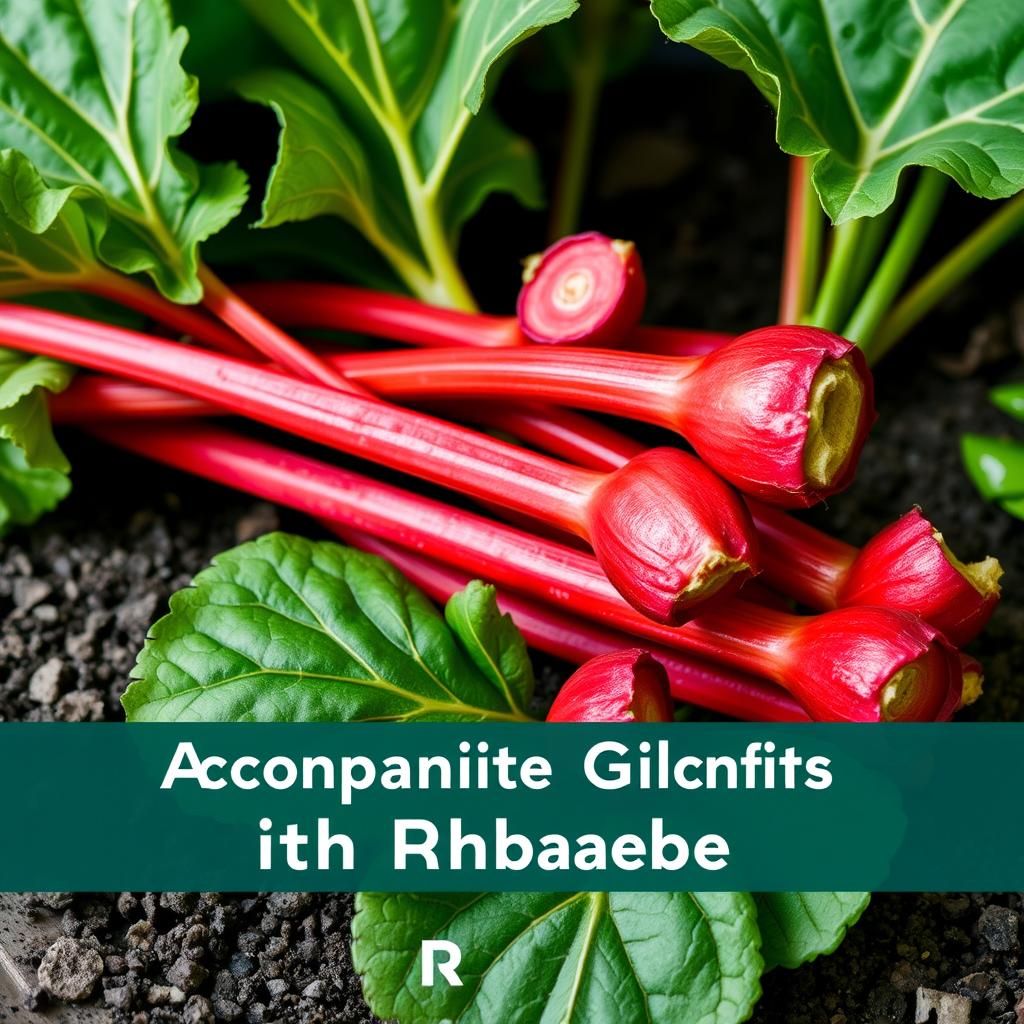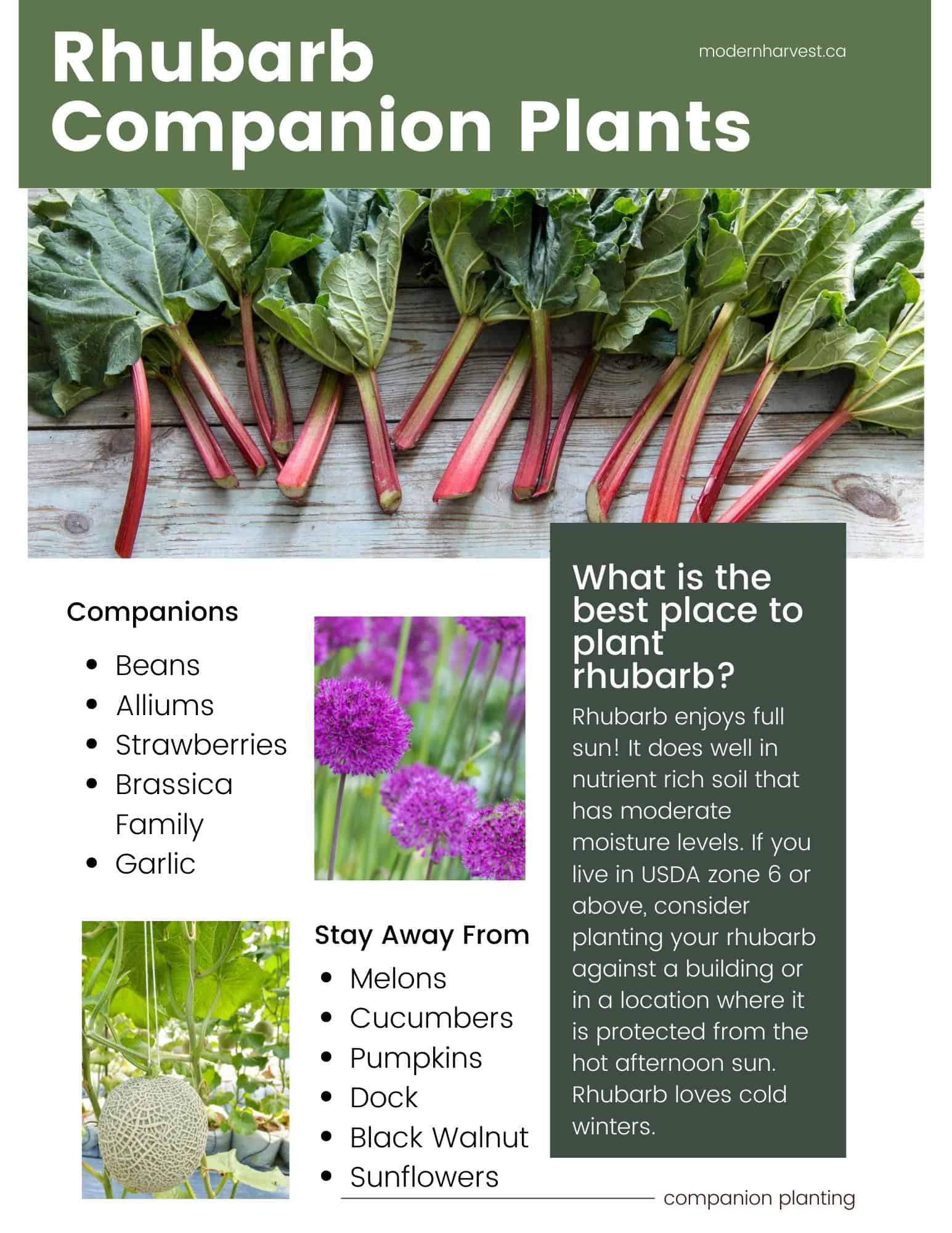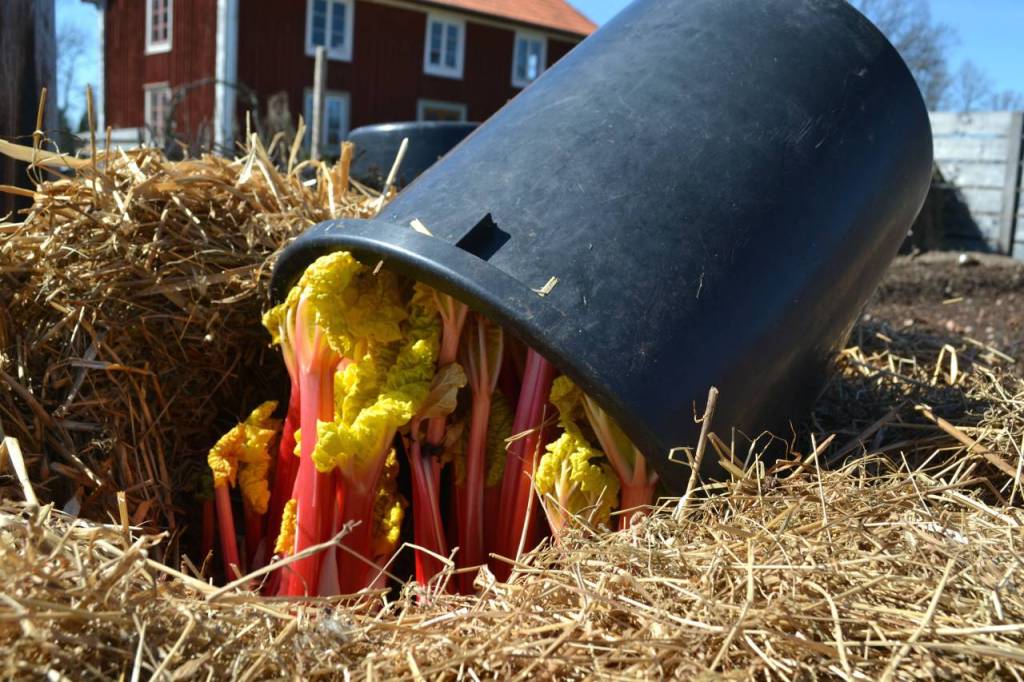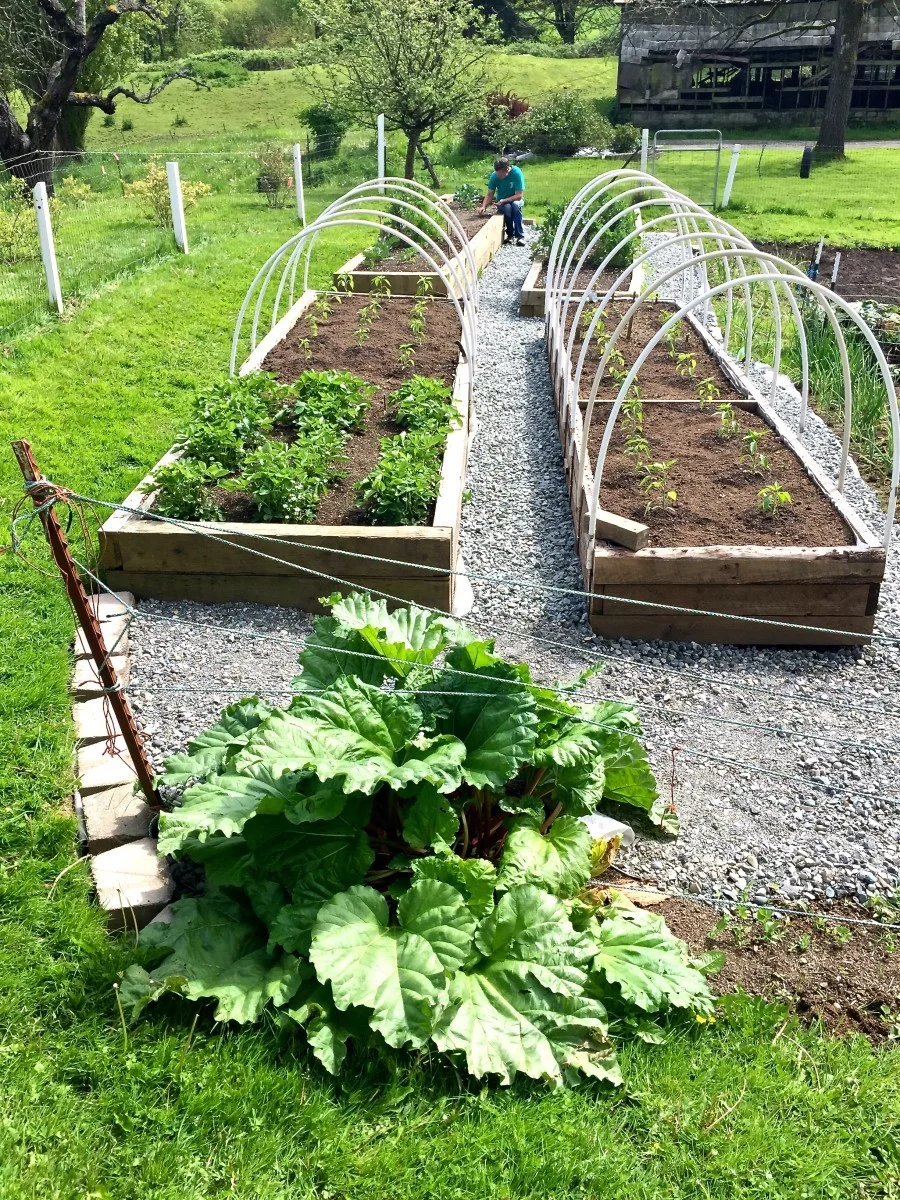Ultimate Guide to Companion Planting with Rhubarb: Boost Your Garden's Success

Companion planting is an age-old gardening technique that enhances plant growth and resilience by strategically pairing compatible species. In this ultimate guide, we will explore the benefits of companion planting with rhubarb, a versatile and hardy perennial that not only thrives in various conditions but also serves as an excellent companion for numerous plants. By understanding which plants harmonize with rhubarb, gardeners can maximize their yields, deter pests, and improve soil health. Join us as we delve into the art of companion planting with rhubarb, unlocking the potential for a thriving garden ecosystem.
Companion Planting with Rhubarb
Companion planting with rhubarb can significantly enhance the health and yield of your garden. By strategically placing rhubarb alongside compatible plants, gardeners can benefit from improved growth, pest control, and better overall soil health. For instance, rhubarb pairs well with flowers like marigolds that deter pests, while also providing shade to more delicate plants during the hotter months. Furthermore, the large leaves of rhubarb can help suppress weed growth, creating a more advantageous environment for its neighbors. Therefore, understanding which plants coexist harmoniously with rhubarb is essential for maximizing the benefits of companion planting.
Best Companion Plants for Rhubarb
When selecting the best companion plants for rhubarb, consider options like strawberries, chives, and beans. Strawberries thrive in similar soil conditions and can benefit from the shade provided by rhubarb's broad leaves. Meanwhile, chives not only enhance the flavor of nearby plants but may also help deter aphids that could harm rhubarb. Beans can add nitrogen to the soil, enriching it and promoting the healthy growth of rhubarb and other nearby plants.
Plants to Avoid Near Rhubarb
Certain plants should be avoided when growing rhubarb due to their potential detrimental effects. Notably, potatoes and cabbage can compete for resources and may encourage diseases that can harm rhubarb. Additionally, plants like tomatoes and peppers can attract pests that could also affect rhubarb. To ensure the health of your garden, keep these aggressive or incompatible plants at a distance from your rhubarb.
Benefits of Companion Planting with Rhubarb
The practice of companion planting with rhubarb offers numerous benefits, including natural pest control and improved nutrient cycling. The shade cast by rhubarb leaves can help cool the soil, providing a favorable microclimate for neighboring plants. Additionally, plants grown in proximity can share nutrients through their root systems, resulting in healthier growth. The mutual protection against pests, as seen with rhubarb and certain flowers, creates a more resilient garden overall.
Rhubarb Care in Companion Planting
Proper rhubarb care is crucial in companion planting strategies. Ensure that rhubarb is planted in well-draining soil and receives adequate water, particularly during dry spells. Mulching around rhubarb can retain moisture and suppress weeds, while also providing nutrients as it breaks down. Regular fertilization during the growing season, especially with organic options such as compost, will keep the rhubarb healthy and enable it to thrive alongside its companions.
Soil and Fertility Considerations for Rhubarb
Understanding soil and fertility considerations is vital for successful companion planting with rhubarb. This vegetable prefers rich, loamy soil that is high in organic matter. Conducting a soil test before planting helps determine the right amendments to enhance fertility. Adding organic materials like compost not only improves nutrient availability but also supports healthy microbial activity in the soil, which benefits not just rhubarb but all the plants in your garden.
| Plant Type | Compatibility | Comments |
|---|---|---|
| Strawberries | Good | Benefit from shade and shared soil nutrition. |
| Chives | Good | Enhance flavor and deter pests. |
| Beans | Good | Add nitrogen to the soil. |
| Potatoes | Poor | Compete for resources and attract pests. |
| Cabbage | Poor | Can spread diseases harmful to rhubarb. |
What should rhubarb not be planted near?

Rhubarb is a unique plant that requires specific conditions to thrive and can be sensitive to its neighbors in the garden. Here are some plants and areas that rhubarb should not be planted near:
Companion Planting Considerations
When planning your garden, it is essential to consider companion planting. Rhubarb does not get along well with certain plants due to their competing nutrient needs and growth habits.
- Legumes: Plants like beans and peas can deplete the nitrogen levels in the soil, which rhubarb heavily relies on.
- Potatoes: Both plants are susceptible to similar diseases, which can spread easily when planted nearby.
- Strawberries: The two can compete for resources, and their growth patterns may hinder one another.
Potential Pest Issues
Certain plants can attract pests that may harm rhubarb. Therefore, it is advisable to avoid planting near those species that can bring in unwanted visitors.
- Tomatoes: The presence of tomato plants can attract pests like aphids, which might also infest rhubarb.
- Eggplants: Similar to tomatoes, eggplants can draw pests such as spider mites and whiteflies.
- Peppers: Pepper plants might attract the same pests, compounding problems for nearby rhubarb.
Soil Nutrient Competition
Nutrient availability is a critical factor for rhubarb's growth. Some plants can compete for the nutrients rhubarb requires, affecting its development and yield.
- Brassicas (cabbage, broccoli, etc.): These plants are heavy feeders and can deplete the soil of vital nutrients like potassium and nitrogen.
- Asparagus: Asparagus also demands a lot of nutrients and space, creating competition that may stunt rhubarb's growth.
- Carrots: They have a similar nutrient requirement, which can lead to competition for resources.
Planting Zones and Conditions
Rhubarb has specific requirements when it comes to the environment. Planting it near certain other plants can lead to poor growing conditions.
- Shade Plants: Plants that thrive in shade can outcompete rhubarb for light, affecting its growth negatively.
- Low-Growing Flowers: Similar to shade plants, low-growing flowers can obstruct sunlight needed by rhubarb.
- Moisture-Loving Plants: Plants that require a lot of water can create an overly moist environment that rhubarb does not favor.
Root Structure Conflicts
The root structures of neighboring plants can dramatically affect rhubarb's growth. Some plants have aggressive or deep roots that could interfere with rhubarb's own root development.
See also:
- Perennial Herbs: Herbs like mint or oregano can spread aggressively, blocking rhubarb's roots from accessing nutrients.
- Deep-Rooted Grasses: These grasses can absorb a significant amount of water and nutrients, depriving rhubarb.
- Tree Roots: Trees nearby can create competition for moisture and nutrients, hampering rhubarb's growth.
Why do you put a bucket over rhubarb?

Putting a bucket over rhubarb serves several purposes, primarily focused on protecting the plant and promoting its growth. Here are the essential reasons for this practice:
1. Frost Protection: Rhubarb is particularly sensitive to frost, especially when it begins to emerge in early spring. A bucket acts as a barrier against cold temperatures, providing the warmth required for healthy growth.
2. Encouragement of Growth: By covering rhubarb with a bucket, gardeners can create a mini-greenhouse effect. The enclosed space retains heat and moisture, fostering quicker and more vigorous growth. This can lead to an earlier harvest.
3. Pest Management: The bucket can also serve as a physical barrier, deterring pests such as slugs and other insects that might feed on the tender rhubarb shoots. This reduces the potential for damage and promotes a healthier plant.
4. Reducing Light Exposure: In some cases, preventing excess light from reaching the rhubarb can protect it from becoming overly leggy or bolting. A bucket limits light, which can be useful in managing plant growth timing.
5. Flood Prevention: In areas prone to heavy rainfall, covering rhubarb can help protect the roots from being waterlogged, which is detrimental to their health. The bucket shields the plant from direct rain, allowing for better drainage.
Frost Protection
Covering rhubarb with a bucket is an effective method to shield it from frost damage. When frosty nights are forecasted, gardeners can place a bucket over the young plants. This provides a layer of insulation, keeping the temperature around the rhubarb higher than the exposed air.
- The bucket traps heat generated by the sun during the day.
- It minimizes cold winds that can lower temperatures.
- The protection helps prevent the plant from stunting or dying due to frostbite.
Encouragement of Growth
Using a bucket can accelerate the growth process of rhubarb. By creating a warm and humid environment, the conditions become ideal for germination and growth acceleration.
- Plants grow faster when they are kept warm and moist.
- The mini-greenhouse effect can lead to earlier harvesting opportunities.
- Improved growth conditions enhance the overall health of the rhubarb plant.
Pest Management
Pests can pose a serious threat to young rhubarb shoots. A bucket serves as a physical barrier against snails, slugs, and other potential threats that might harm the plant.
- Barriers can deter animals and insects from accessing the rhubarb.
- Physical coverage reduces the likelihood of infestations.
- Choosing a bucket minimizes the need for chemical pest repellents.
Reducing Light Exposure
Sometimes, too much sunlight can lead rhubarb to bolt — producing flowers and seeds instead of sustaining plant growth. A bucket can limit excessive light exposure.
- Limiting light allows the plant to conserve energy.
- This helps regulate plant growth and development.
- Plants remain more focused on leaf production rather than reproduction.
Flood Prevention
In places that experience heavy rainfall, excess water can lead to root rot in rhubarb. Using a bucket can help prevent water damage and promote better drainage.
- A bucket collects rainwater on its surface while allowing for better drainage around the roots.
- Protecting the roots ensures healthier growth and longevity of the plant.
- It minimizes the risk of waterlogging, which can be detrimental to rhubarb health.
Where is the best place to plant rhubarb in the garden?

To determine the best place to plant rhubarb in the garden, several factors must be considered, including sunlight, soil type, moisture, and spacing. Rhubarb plants thrive in a well-drained location that receives plenty of sunlight, ideally 6 to 8 hours per day. Here are some key considerations for establishing a thriving rhubarb patch.
See also:
Ideal Sunlight Conditions
Rhubarb requires full sun to grow vigorously and produce a generous yield. Here are the key points regarding sunlight:
- 6-8 Hours of Sunlight: Ensure your rhubarb patch gets at least 6 hours of direct sunlight daily.
- Morning Sun: Morning sunlight is particularly beneficial as it helps dry any dew quickly, reducing disease risk.
- Avoid Heavy Shade: Planting in shaded areas can lead to weak, leggy plants and reduced production.
Soil Type and Quality
The quality of the soil where rhubarb is planted is crucial for its growth and productivity. Consider the following soil characteristics:
- Well-Drained Soil: Rhubarb needs soil that drains well to prevent root rot.
- Rich in Organic Matter: Incorporate compost or well-rotted manure to enrich the soil and improve structure.
- pH Level: Aim for soil with a pH level between 6.0 and 6.8 for optimal nutrient uptake.
Moisture Requirements
Rhubarb plants prefer consistently moist soil, but they do not tolerate waterlogged conditions. Ensure proper moisture management:
- Regular Watering: Water your rhubarb deeply, especially during dry spells, to maintain soil moisture.
- Mulching: Apply a layer of organic mulch to help retain soil moisture and suppress weeds.
- Avoid Overwatering: Make sure the soil is not too wet; excess water can harm the plants.
Spacing Considerations
Proper spacing between rhubarb plants is essential for healthy growth and vigor. Follow these spacing tips:
- Plant Size: Allow sufficient space for rhubarb to grow; typically, the plants should be spaced at least 3 feet apart.
- Access for Maintenance: Ensure enough room for easy access to maintain, water, and harvest the plants.
- Avoid Crowding: Crowded plants can lead to competition for nutrients and water, reducing yield.
Climate Considerations
Understanding the climate in your area is also important when selecting a planting location for rhubarb. Here are some climate-related tips:
- Cold Tolerance: Rhubarb is a perennial that thrives in temperate climates with cold winters.
- Frost Protection: Choose a location that is less prone to late spring frosts, which can damage young shoots.
- Hot Summers: In hotter climates, consider some afternoon shade to protect rhubarb from excessive heat.
What is a companion to rhubarb?

Rhubarb, known for its tart flavor, can benefit from companionship with other plants in the garden. The concept of companion planting includes selecting plants that promote each other's growth, deter pests, and enhance overall garden health. Here are some companions that pair well with rhubarb:
Benefits of Companion Planting with Rhubarb
Companion planting with rhubarb can create a symbiotic environment in the garden. When paired with the right plants, rhubarb can thrive and resist pests more effectively. The benefits include:
- Pest Deterrence: Certain plants can help repel pests that commonly affect rhubarb.
- Soil Health: Companion plants can contribute nutrients back to the soil, benefiting rhubarb's growth.
- Space Optimization: Utilizing vertical growth or low-growing plants can maximize garden space.
Best Companion Plants for Rhubarb
Several plants work exceptionally well alongside rhubarb, enhancing its growth and helping its overall health. These include:
- Strawberries: These two thrive well together, as strawberries benefit from the shade that rhubarb provides.
- Onions: Onions can help deter pest infestations that may affect rhubarb.
- Garlic: Like onions, garlic offers natural pest resistance and can help protect rhubarb.
Plants to Avoid When Growing Rhubarb
Not all plant combinations are beneficial. Certain plants can hinder rhubarb’s growth and should be avoided in proximity. These include:
- Potatoes: They compete for nutrients and space, negatively impacting rhubarb.
- Cabbage Family: Broccoli, kale, and other brassicas can attract pests that may harm rhubarb.
- Beans: These may disrupt the growth of rhubarb due to their nitrogen-fixing nature.
Growing Conditions for Rhubarb and Its Companions
Understanding the ideal growing conditions is crucial for rhubarb and its companions. They thrive under specific circumstances, including:
- Soil Type: Well-drained, nutrient-rich soil is essential for healthy growth.
- Water Needs: Rhubarb requires consistent moisture without waterlogging.
- Sun Exposure: Full sun to partial shade encourages optimal growth rates for both rhubarb and companions.
Harvesting and Maintenance Tips for Rhubarb and Its Companions
Proper harvesting and maintenance can promote a healthy garden environment for rhubarb and its chosen companions. Key practices include:
- Regular Harvesting: Picking the stems encourages further growth and keeps plants healthy.
- Mulching: Applying mulch can help retain soil moisture and suppress weeds.
- Pest Monitoring: Regularly checking for pests ensures that both rhubarb and companion plants stay disease-free.
Questions from Our Readers
What is companion planting with rhubarb?
Companion planting with rhubarb involves growing rhubarb alongside specific plants that can benefit from its presence. The idea is to create mutually beneficial relationships, where rhubarb can provide shade or pest deterrence, while companion plants can help enhance soil conditions or reduce diseases.
What plants grow well with rhubarb?
Some ideal companion plants for rhubarb include strawberries, asparagus, and horseradish. These plants not only thrive in similar soil conditions but can also help repel pests, creating a more productive garden space and promoting healthier growth overall.
See also:
Are there any plants to avoid when planting rhubarb?
It's best to avoid planting rhubarb near potatoes and cabbage as these can compete for nutrients and may lead to unfavorable growing conditions. Additionally, these plants can attract common pests that might affect the health of the rhubarb, resulting in lower yields.
How does rhubarb affect soil health in companion planting?
Rhubarb can contribute positively to soil health through its deep root system, which helps aerate the soil and improve drainage. The leaves of rhubarb also add valuable organic matter when decomposed, enriching the soil with nutrients that benefit surrounding plants in a companion planting arrangement.

If you want to read more articles like Ultimate Guide to Companion Planting with Rhubarb: Boost Your Garden's Success, we recommend you check out our Gardeners category.
Leave a Reply
Related Articles